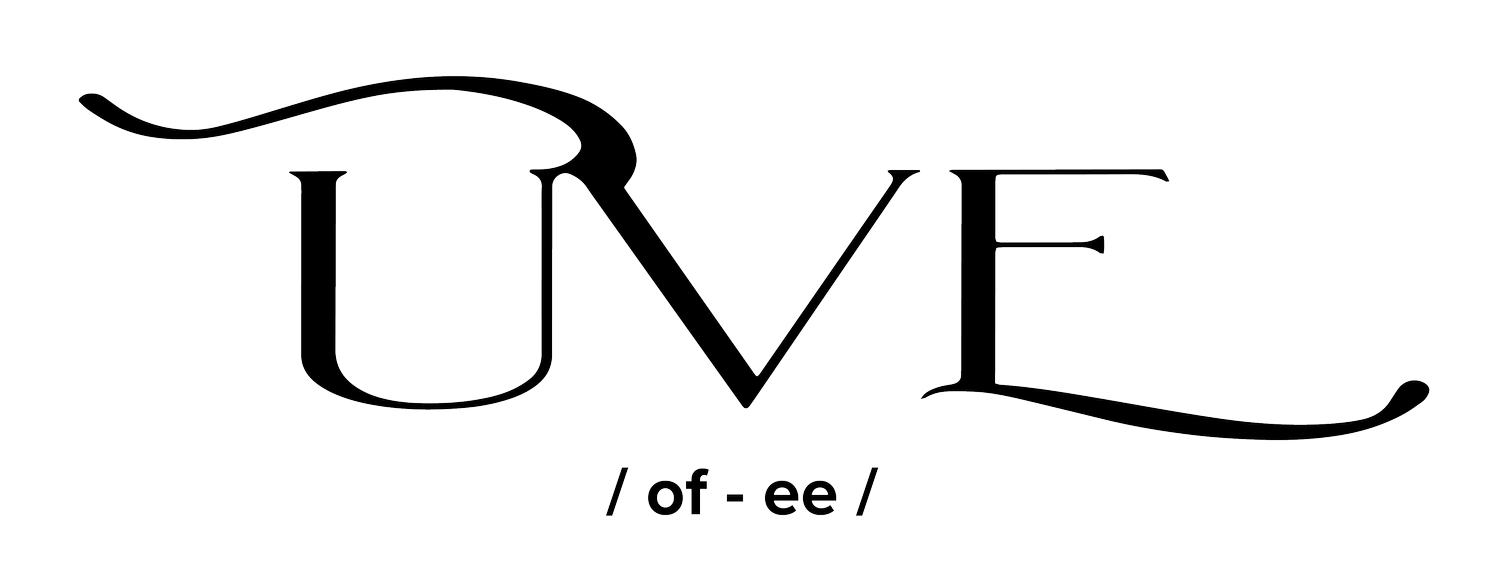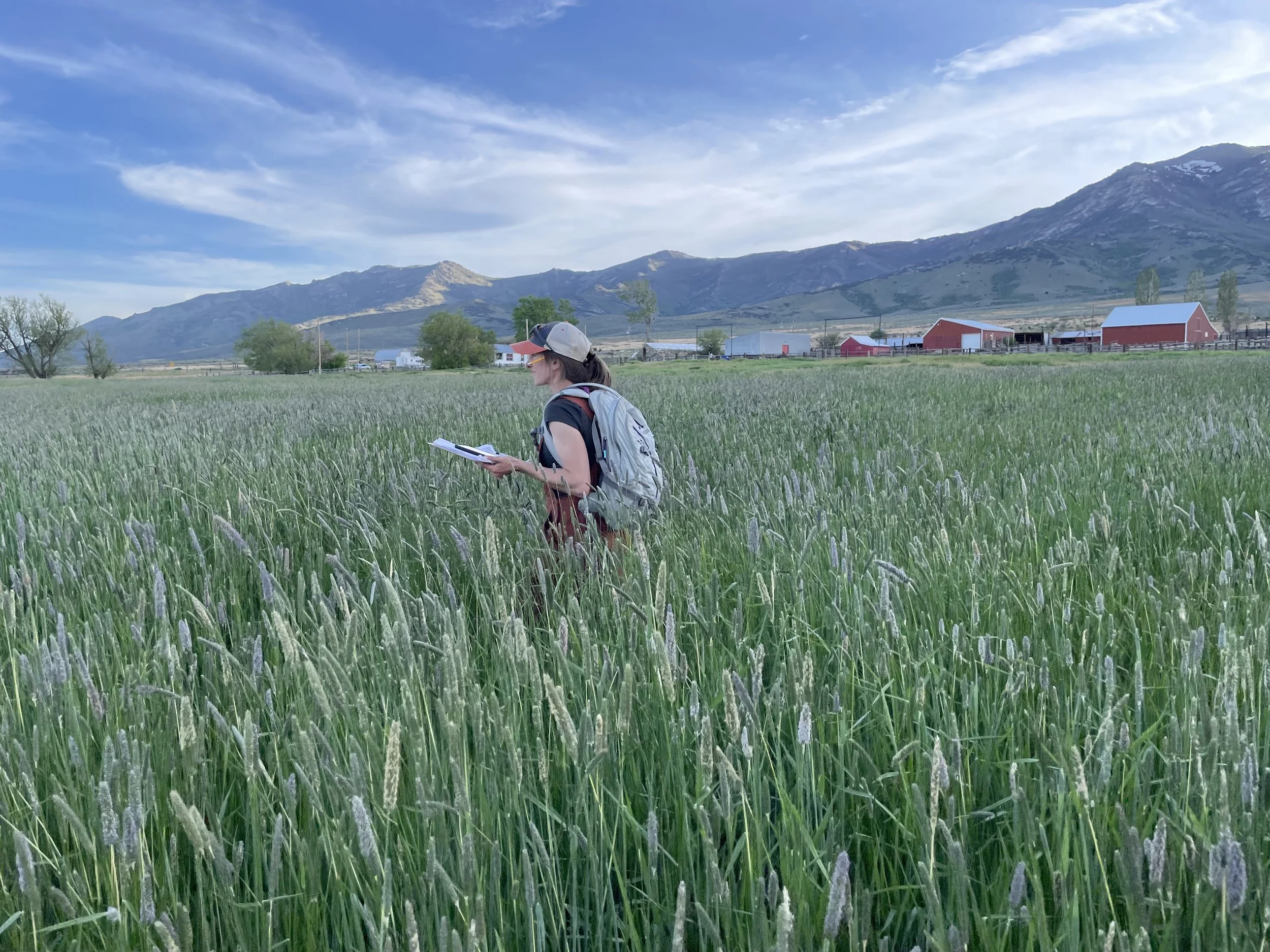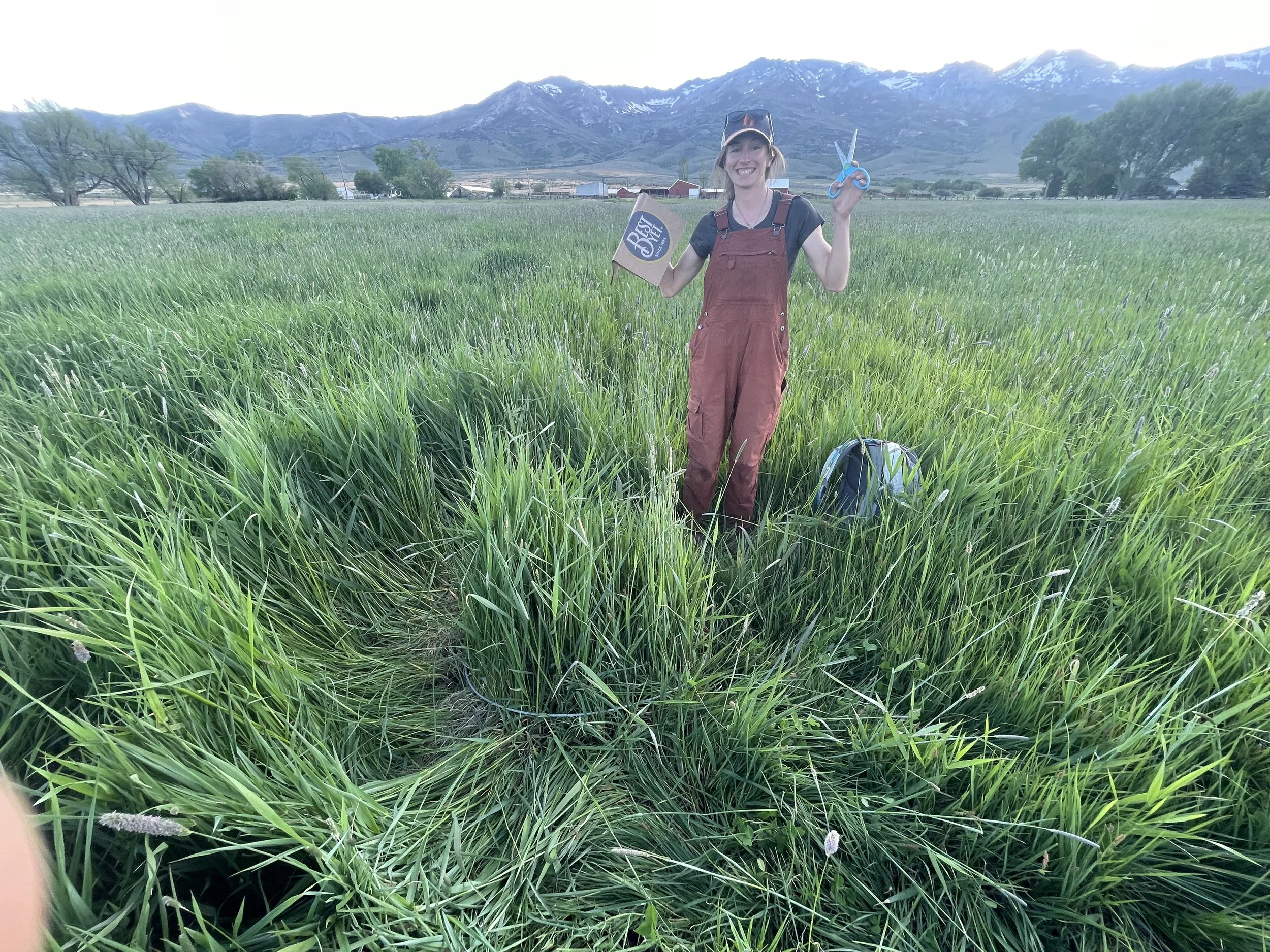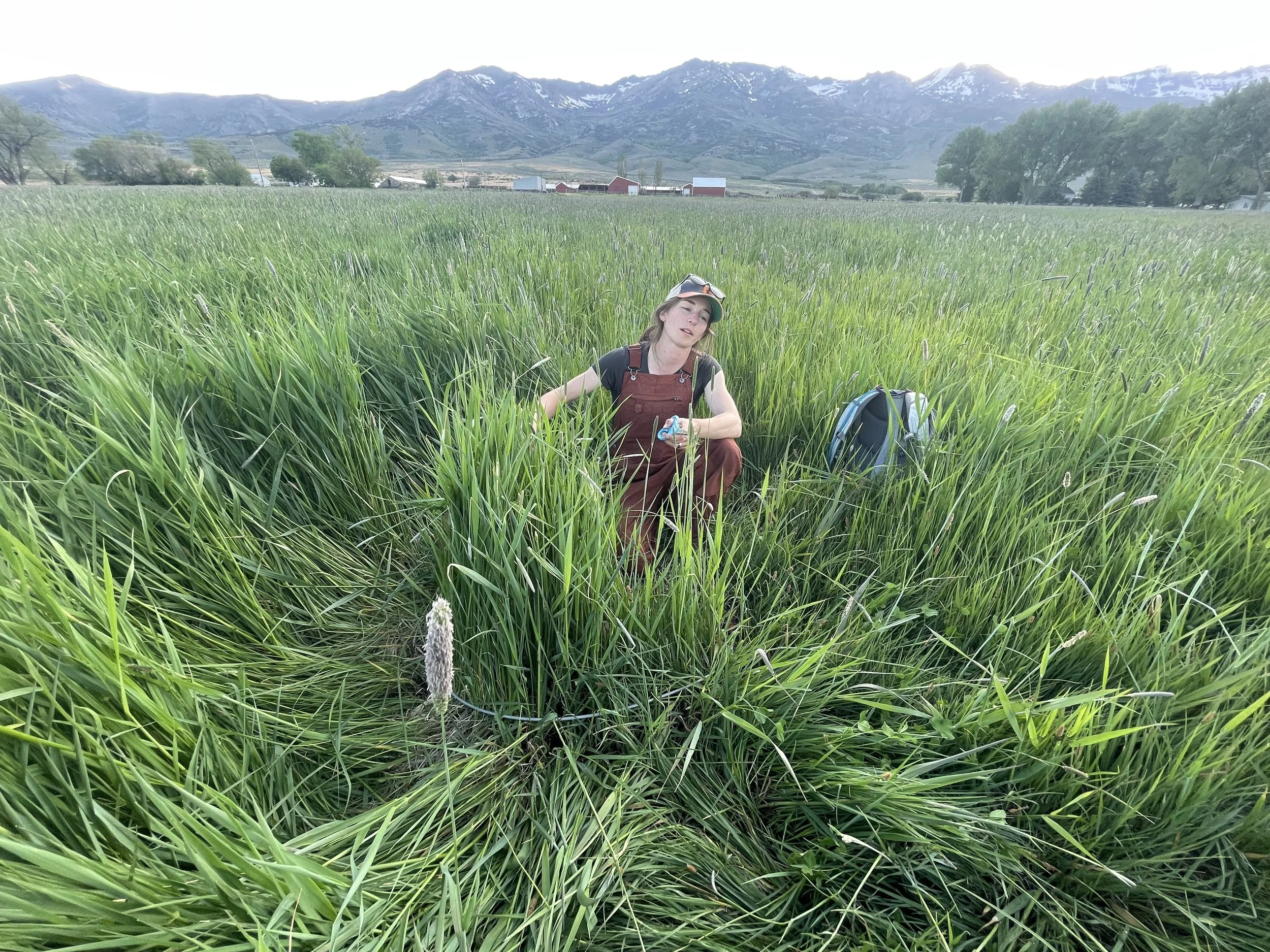The Value of Forage Assessment For Grazing Planning
By Jackie Eshelman
It’s end of season again and whether you are going into, or coming out of, your growing season, NOW is the time to start planning the next season’s grazing. Here at UVE, we thought it would be useful to help demystify some of the foundational concepts of Holistic Planned Grazing (HPG). The topics we want to cover are growing seasons and forage assessments. Let’s start with the basics.
Why do we need to plan our grazing?
Holistic Planned Grazing (HPG) allows us to plan for the recovery time forage plants require between grazing events. It is a process to document and ensure that we are getting the right animals to the right place at the right time for the right reason with the right behavior to get the intended outcomes.
Forage Assessment: What is it and how to use it.
Conducting regular forage assessments is essential for effective grazing planning. Assessing our forage helps ensure that we are using the tools of grazing, animal impact, and rest intentionally so that we do not unintentionally overgraze or overrest plants, and that we are providing for our animals’ welfare and nutrition across the seasons.
We assess our forage in order to evaluate the quantity and quality of available forage in a defined grazing area. It is used to:
Determine how much forage is available for consumption by livestock;
Evaluate whether it meets livestock nutritional requirements;
Informs decisions about grazing quality, animal impact, and rest and recovery cycles.
When we look at Grazing Quality we are really talking about two things: time (duration) and timing (schedule). We essentially want to quantify: (1) the growth rate of available vegetation to know when overgrazing can occur and (2) how much residual forage should remain for continued growth after grazing. Using grazing duration (time), remaining plant vigor left to photosynthesize after grazing(residual), and rate of plant regrowth (recovery) before returning (timing), to prevent overgrazing or underutilization of forage resources are all aspects to consider.
The evaluation of Animal Impact is broken down into two additional considerations: heard effect (animal behavior) and stock density (# of animals in a defined area). To quantify the desired impact of the animals on the land we can think about it in terms of how many hoof prints we want on each square foot grazed. A large portion of evaluating animal impact is looking at how we evaluate the cycle of rest and recovery.
Properly using the tool of Rest to allow for adequate Recovery periods is essential for the health and well-being of both your forage base and the animals that depend on it. What we are doing is planning the time and timing of our use of the tools of Animal Impact and Grazing and then using the tool of Rest to ensure the adequate recovery of plants.
What’s a good indicator to tell us when it is time to move on and allow for plants to recover in a pasture? While you are implementing your grazing plan, measure the daily growth rates of the plants you particularly want to promote in your forage base. Those key species are going to be your barometer/indicator for when and how you monitor your rest and recovery cycle.
What is the difference between the growing season (GS) and the dormant season (DS) or non-growing season?
Growing Season (GS):
Typically encompasses the warmer months of the year for a region.
Forage plants are actively growing with growth rates generally at their peak. Plants will continue to produce new growth even after grazing.
Growing Season Grazing Goal:
Harvest as much solar energy as possible while leaving enough residual vigor for plant regrowth and to continue feeding the soil.
Growing Season questions to ask:
What is the desired outcome for the field we are about to graze?
How much forage do we have?
How many acres will we need to fence off to (1) feed the number of animals we have for one day, (2) leave the desired residual, and (3) get the desired impact we want?
We think about each tool (grazing, animal impact, rest) and the management guideline (how to get the impact you want with the tool you are using) when we are making management decisions.
Dormant Season (DS):
Occurs in your region’s colder months of the year.
Forage growth is minimal and vegetation goes into dormancy (stops growing).
In general, we don’t need to be concerned with overgrazing in a dormant season.
Will we have enough feed for the DS? Import supplemental feed or destock? Residuals are essential!
Dormant Season Grazing Goal:
Rationing the feed available before the next growing season, evaluating animal impact and animal performance, and preparing the land for the next growing season.
Dormant Season questions to ask:
How much forage do we have left after the growing season and how do we need to plan our grazing to get the outcomes we intend?
How much residual do we want to leave?
How can we use Animal impact to get residual ON THE GROUND before the next growing season?
Do we have enough water and nutrition resources?
Will we need to supplement feed, protein, and minerals? If we are supplementing feed, where do we also need to cover bare soil (feed there!)?
How will we ensure we are getting animals to the right place at the right time for the right reason with the right behavior to get the outcomes we intend?
Fun Fact: On the West Coast of the US, the GS and DS happen at the same time in different regions. For instance, in the Great Central Valley ecoregion, the GS goes from November-April but in the neighboring Sierra Nevada ecoregion, the GS is May-September.
Visual square or clipping or both?
It can take some repetition to get skilled at estimating forage. For an experienced eye, a visual square is a quick easy way to assess our forage availability. When we first begin to assess forage, it can be helpful to take a clipping of the forage we are trying to assess to get a more accurate reading and see how close we are to our estimation. Usually, folks find that they are naturals at this and with some small adjustments are assessing their forage accurately in no time!
Growing Season visual square assessment + clipping to verify the estimate with Elaina Michael
Dormant Season forage clipping w/Tony Malmberg & Cricket Eaton in the Great Central Valley Ecoregion
So what do the growing season and your forage assessment have to do with Grazing Planning?
Where we are in our growing season determines if, and how fast, the forage is growing. Forage assessments directly inform the management of our grazing systems and the well-being of livestock. Grazing planning is the process of strategically managing the use of pastures and forage resources. We use grazing planning to estimate where we want to be, how much biomass is there, and how we want to use the tools we have (grazing, animal impact & rest) to get the forage we want for the animals and the outcomes we want on the land.
Grazing planning during the Growing Season involves informed decisions about keeping as much leaf area as possible and harvesting sunlight. This includes minimizing overgrazing to keep plants vigorous, basically leaving enough leaf area to continue photosynthesizing when animals leave. We must clearly define the outcomes we desire while implementing HPG so that we know how we want to use the tools we have. It’s hard to tell if we are getting there if we don’t know where we are going!
Grazing planning during the Dormant Season involves managing livestock when forage has stopped growing. Our assessment becomes more about understanding the quantity of feed we have to hold us over until the grass starts growing again. In many cases, this may require stockpiling forage during the Growing Season to ensure adequate feed during the Dormant Season. If we do not have enough forage for our herd, we need to know ahead of time so we can make decisions about bringing in supplemental feed or potentially destocking.
If this leaves you with more questions than answers, it might be time to take, or re-take, a Holistic Planned Grazing (HPG) Course to learn more about the Holistic Management Framework and Planning Processes. Remember, if you have taken a course through our hub, you can always return and take that course again, free of charge (you just cover food/lodging)!
Are you wondering how you know how to make management decisions according to what the Ecosystem needs?
Start monitoring the land with EOV
Are you looking for a regenerative community?
Join one of our regional management clubs or start one in your region to begin sharing with peers and understanding context in a larger circle engaged in the regenerative journey.
Contact our Community Network Team to learn more
Are you stuck in your management and looking for mentorship and implementation support? Want to learn more?
Get support from one of our Master Field Professionals
Contact us
Jackie Enloe Eshelman is a Holder at UVE Hub, a Savory Field Professional and EOV Master Verifier, and an experiential educator. She leads UVE’s EOV monitoring crew and has the pleasure of traveling the western regions of the US working to support land & livestock stewards wherever they are on their regenerative journey.







